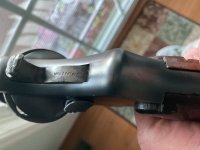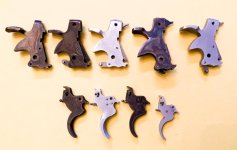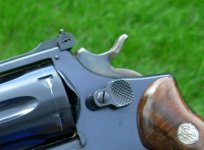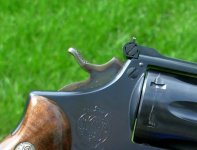silicosys4
Member
- Joined
- Aug 30, 2024
- Messages
- 128
- Reaction score
- 405
Hi everyone,
I finally got my recently acquired 17-2 out to shoot and when I got it into full sunlight Wow!
The case hardening on the hammer was carnival clown colorful, like it had been done by Turnbull.
I've never seen such vivid case hardening on S&W triggers or hammers before, mostly straw and grey, some blue if you were lucky.
Does anyone know the process or methods that S&W uses to case harden their trigger? I thought they were just going for a case hardening but maybe there was a period where they were using a more color inducing method
Or just luck of the draw and a fluke? Or are they all like that out the factory door and just most lose it through use? That doesn't seem to be the case because I have a few NIB guns with case hardened trigger and again, nothing special, straw and gray streaks
Of the S&W's I have, only 2 show any significant colors but I remember owning a 10-5 with very vivid colors now that I think about it. That would make a 10-5, a 17-2, and I have a 14-3 that's also pretty colorful...so maybe its a 1960's thing.
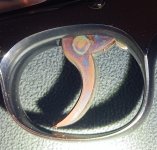
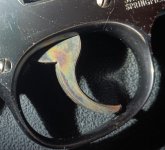
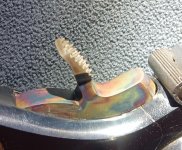
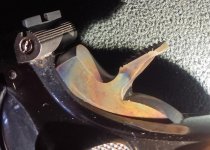
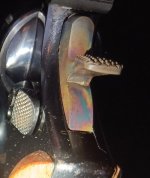
I finally got my recently acquired 17-2 out to shoot and when I got it into full sunlight Wow!
The case hardening on the hammer was carnival clown colorful, like it had been done by Turnbull.
I've never seen such vivid case hardening on S&W triggers or hammers before, mostly straw and grey, some blue if you were lucky.
Does anyone know the process or methods that S&W uses to case harden their trigger? I thought they were just going for a case hardening but maybe there was a period where they were using a more color inducing method
Or just luck of the draw and a fluke? Or are they all like that out the factory door and just most lose it through use? That doesn't seem to be the case because I have a few NIB guns with case hardened trigger and again, nothing special, straw and gray streaks
Of the S&W's I have, only 2 show any significant colors but I remember owning a 10-5 with very vivid colors now that I think about it. That would make a 10-5, a 17-2, and I have a 14-3 that's also pretty colorful...so maybe its a 1960's thing.





Last edited:

